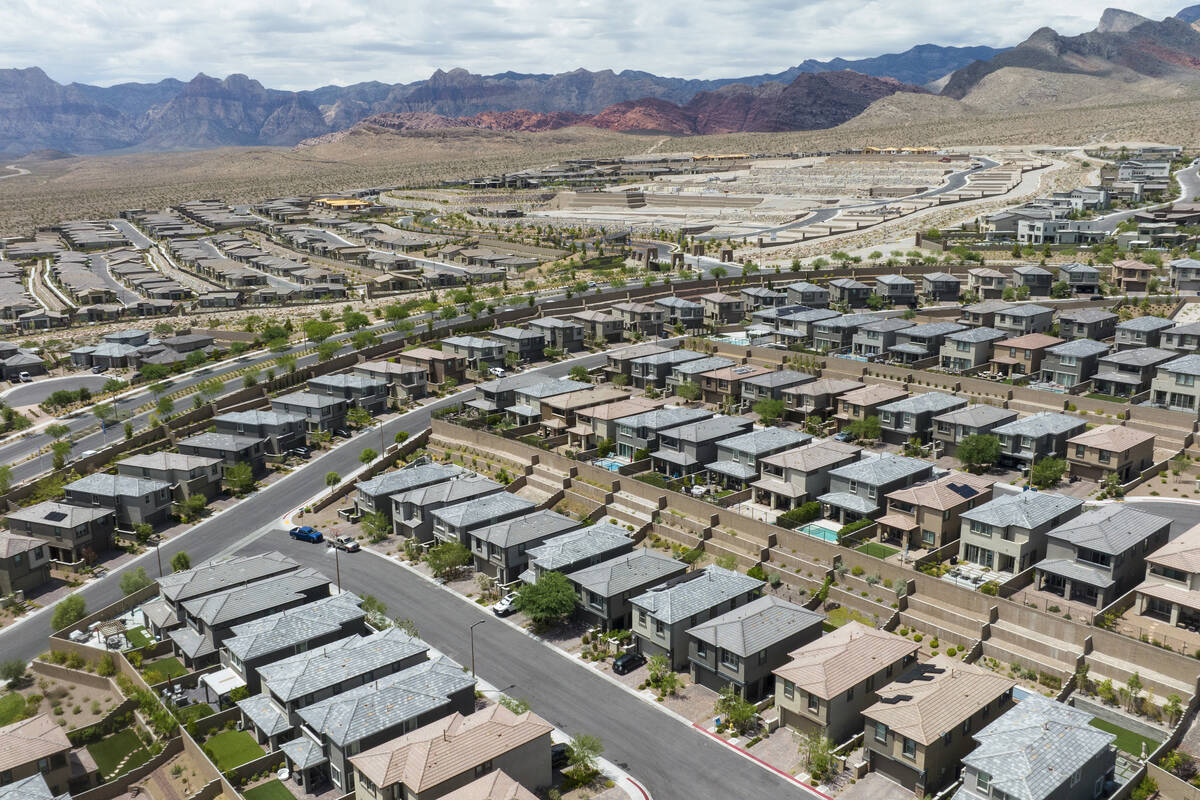Is Las Vegas in a buyer’s or seller’s real estate market?
Local realtors and the two biggest online real estate brokerages are divided as to whether the Las Vegas Valley is in a buyer’s or seller’s market.
The valley’s residential real estate market varies wildly by neighborhood, said Forrest Barbee with Berkshire Hathaway Home Services. And with five months of supply of houses for sale, according to his company’s statistics, the market is still considered balanced, he said.
“Markets with three to six months of inventory are considered balanced, while markets with more than six months of inventory generally offer buyers the initial negotiating advantage,” Barbee said. “However, supply and demand, resulting in months of inventory must be considered on a community-by-community basis.”
Redfin reported the valley’s real estate market shifted to a buyer’s market in August as the number of sellers outnumbered buyers by 96.7 percent.
There is no industry consensus on what makes a buyer’s or seller’s market, however real estate experts usually use months of inventory for sale as their main barometer. Typically in a buyer’s market, buyers have more leverage as there are more houses for sale than they are people looking to buy, but in a seller’s market, homes sell faster as buyers face more competition. Elevated mortgage rates and homeowners who are locked into low rates they got during the pandemic are also warping the residential market’s economic indicators and making it tougher to discern who has the upper hand in 2025.
As of October, according to Berkshire Hathaway data, the luxury neighborhood of MacDonald Highlands in Henderon had the longest average days on market (127) with an average sale price of $4.8 million. MacDonald Highlands also has approximately eight months of inventory. Compared to the other end of the spectrum, the Lone Mountain neighborhood in the west valley, where the average days to sell is only 23 and the average sale price is $673,224 with nine months of inventory.
Barbee said the market in 2025 is one of wild swings, as there is now downward pressure on the median sale price of single-family homes due to more sales in the lower half of the market, however there is upward pressure on the average closed sales price of a home because of an increase in luxury home offerings (homes for sale for more than $1 million).
Lori Galarza, the broker/owner with Re/Max Central, said it “definitely feels like a buyer’s market” right now in the valley.
“As of September, we (Southern Nevada) have 7,502 homes listed for sale. That definitely seems like a substantial number of homes compared to previous markets where we had half that amount,” she said. “Previously this year, it was thought to be a transitional market, meaning not seller and not buyer, sort of in the middle, but many of us feel it is definitely more of buyer’s market at this time. Mine as well as my office’s listings are sitting on the market longer. I’m personally doing more open houses to attract more buyers which seems to be helping.”
She said Re/Max’s data shows about a four months supply and they still have a lot of potential buyers and sellers sitting on the sidelines because of low mortgage rates they got during the pandemic.
“If rates ever drop dramatically in the future, they can just refinance the home they purchased today,” she said. “I think a lot of buyers don’t realize that. Dramatically lower rates in the past have fueled a seller’s market and a buyer frenzy, good for sellers who want buyers to compete for their home but bad for the buyers looking for a deal. The good deals are now when buyers don’t have to compete and they can negotiate.”
Las Vegas Realtors President George Kypreos contends that the real estate market is going through a reset.
“We’re seeing more homes available for sale than we’ve had in some time,” he said in a recent statement. “We’re also seeing a more balanced housing market. Along with other factors that have been shifting in favor of home buyers, we’re entering a time of year that national reports show is the best time to buy.”
How to determine what type of real estate market we’re in
Zillow uses what it calls a “Heat Index” for each metro region market, which tabulates the balance of for-sale supply and demand, giving each region a score out of 100. Any region that has a score of 44 or under is considered a buyer’s market, and anything 69 or above is a seller’s market, and the Las Vegas Valley currently sits at 50.
Orphe Divounguy, a senior economist at the company said the Las Vegas Valley is currently a “neutral market” as competition is somewhat balanced between buyers and sellers.
“It’s been neutral for most of the last year, briefly ticking back up into seller’s territory for the start of the spring buying season in February and March,” said Divounguy.
Zillow statistics from September showed active listings rising 28 percent from the same month last year, however the number of homes for sale is still lower than pre-pandemic averages.
“In September, there were 13,033 active listings throughout the Las Vegas metro, just 3 percent below the pre-pandemic level,” he said. “In April 2021, when the market was red hot, only 7,700 listings were on the for-sale market. While there is more inventory available than in recent years, supply is roughly in line with normal seasonal patterns.”
Divounguy added they are seeing some movement as of late in regards to the valley’s market.
“It’s worth noting that sellers in Las Vegas are responding to the somewhat softer market by cutting prices and pulling back from the market,” he said. “New for-sale listings from sellers are down 8 percent from last year. Las Vegas also has a relatively high share of listings with price cuts, in line with Austin’s at around 30 percent, nearly double that of New York’s 16 percent.”
Contact Patrick Blennerhassett at pblennerhassett@reviewjournal.com.





















